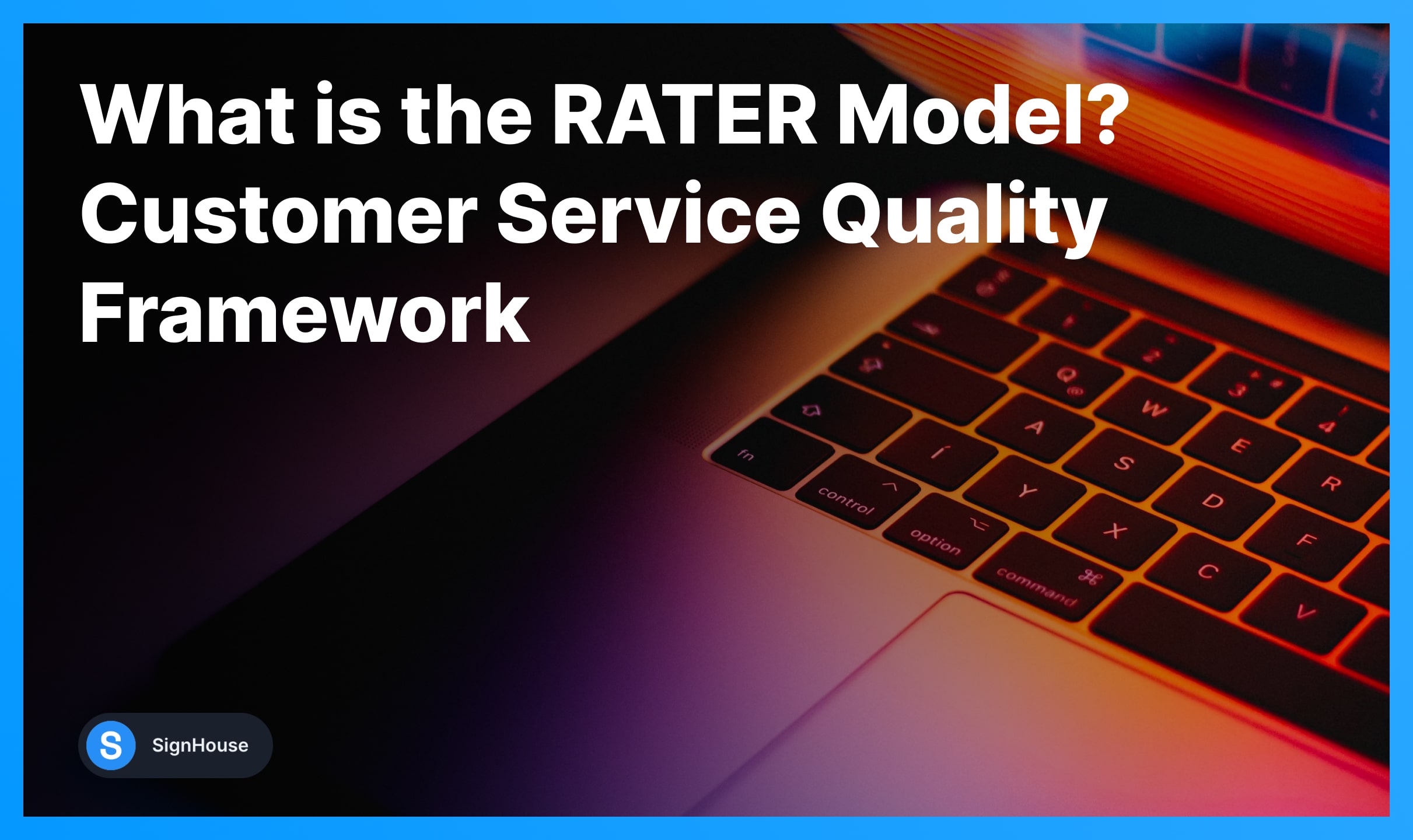What is the RATER Model? Customer Service Quality Framework

As much as 90% of Americans use customer service as an important factor to determine if they should do business with a company and 49% of Americans are expected to switch a company due to poor customer service. Ignoring customer service can prove to be a lethal mistake for your company.
When your company fails to meet customer expectations, they’re most likely to switch. What customers expect from your business in terms of customer service can be determined easily by the RATER model. It is a framework that you can use to measure what customers expect from your business and/or product. It lets you measure customer expectations and use results to improve customer services.
This guide will cover the RATER model in detail and how you can use it to improve customer services.
What is the RATER Model?
RATER model is derived from SERVQUAL which was developed by Parsu Parasuraman, Valarie Zeithaml, and Leonard Berry. The RATER model was published in their book ‘Delivering Quality Service: Balancing Customer Perceptions and Expectations’ in 1990. The RATER model is used to measure customer expectations and it highlights 5 dimensions that customers consider when using a service. It is a condensed version of the original SERVQUAL instrument.
The original SERVQUAL scale had 10 dimensions which were reduced to 5 dimensions in the RATER model. According to the RATER framework, your customers evaluate your business based on 5 metrics either consciously or unconsciously. These include:
- Reliability
- Assurance
- Tangibles
- Empathy
- Responsiveness
These 5 dimensions can be measured by the RATER scale which helps you determine customer expectations and what your company delivers. You can then take the necessary actions to improve service quality. Let’s explore the dimensions and see what they mean.
1. Reliability
Reliability refers to the delivery of agreed service as promised by your company. The service you offer has to be reliable and this can be achieved when you deliver service on time, regularly, and accurately. It is the most important service dimension in the RATER model.
When you don’t offer services to your customers as they expect, your company won’t be reliable for them. When you can’t deliver products on time, when your product doesn’t offer what it claims, or when the product is faulty are a few instances when your company will turn out to be unreliable. This is the case when your customers will clearly say that your company isn’t reliable.
And when your company isn’t reliable, it means one of the two things:
- You are unable to deliver the promised service to your customers
- Your customers misunderstood what your service is.
The service that you deliver should be communicated clearly. You need to create customer expectations based on what service you’ll offer them with. When you don’t set the right expectations, it will eventually make your business unreliable.
Here are a few tips and techniques to improve service reliability:
- Communicate with your customers. The more you talk to them, the better
- Be clear and transparent
- Take customer feedback and see what they think of your business
- Ensure marketing team doesn’t create too much hype
- Keep expectations low and deliver more. Don’t raise the bar too high in terms of building customer expectations.
2. Assurance
Assurance is the dimension that deals with trust and credibility. Do your customers trust you? Do they consider you an expert in the industry? Do your employees and salespersons demonstrate knowledge and expertise? Do customers trust what your employees say?
Meeting customer expectations get easier when you can show them that you are trustworthy and know what you are doing. This includes answering customer queries and concerns effectively and professionally. If a potential customer wants to know how your software will help him reduce his monthly budget, you need to tell that your tool doesn’t reduce the monthly budget rather it only helps you manage finances.
There are several techniques to make your customers trust you:
- Answer customer queries and concerns proactively and accurately
- Train your customer support and sales staff
- Educate your customers by addressing their common issues
- Be honest and transparent
- Use trust symbols and indicators on your website
3. Tangibles
It refers to the physical aspect of your service such as website, office, staff, equipment, etc. How do your customers respond to the tangibles that you have created? Does the physical environment of your business look appealing?
Tangibles don’t always mean something that has a physical appearance rather it refers to the image of your business. If you have an eCommerce store, the tangibles will include your website, online store, product photos, website layout, product descriptions, payment methods that you allow, online customer support, and so on. If you own a local travel agency, tangibles will include your office, vehicles, staff uniform, etc.
Your customers might not always notice tangibles, but it does impact the service you offer. In fact, tangibles have a significant impact on sales. A poorly designed website or a mismanaged office will turn potential customers away, right?
Here are actionable tips on how to improve tangibles:
- Have a well-designed website
- The staff needs to be well-dressed
- Office and equipment should be clean and tidy
- All customer touchpoints should deliver a superior customer experience
4. Empathy
It refers to your employee’s empathic behavior. Does your customer support team emphasize with customers? Your staff must be empathic and your customers should get this feeling.
Your customer support staff has to be empathic. When a customer contacts support and shares a problem, he wants to be emphasized. This is the first rule of customer support and your customers expect this from your staff.
The basic rule of emphasizing is listening to the problem, apologizing, offering assistance, and letting the customer know that you are working on the solution. This works best.
Here are best practices to ensure empathy:
- Listen to your customers
- Apologize
- Train your customer support agents
- Update customers on the progress of their complains
- A short callback can do wonders
5. Responsiveness
Responsiveness refers to your company’s ability and willingness to offer quick and quality services to the customers. How effectively you respond to your customers and how fast you do it. You have to be available to respond to customers when they need you.
A survey revealed that 53% of customers who complain on Twitter expect a response within an hour. This is what’s called responsiveness. Companies that meet this response rate are considered responsive, others don’t.
There are several steps you can take to be responsive:
- Be available across all the channels where your customers are
- Train your staff
- Use software and tools to boost responsiveness
- Try responding to customer queries within 24 hours
- Set up automatic replies
- Be active on social media 24/7 to instantly respond to customer queries
Use the RATER Model to Improve Customer Services
With the RATER model, you can easily identify customer service gaps for these 5 dimensions. As soon as a gap is identified, take actionable steps to improve it. Use the RATER survey to measure customer response for all the five dimensions and see where your company stands. Work on dimensions that perform poorly to improve customer services and to meet your customer expectations.








